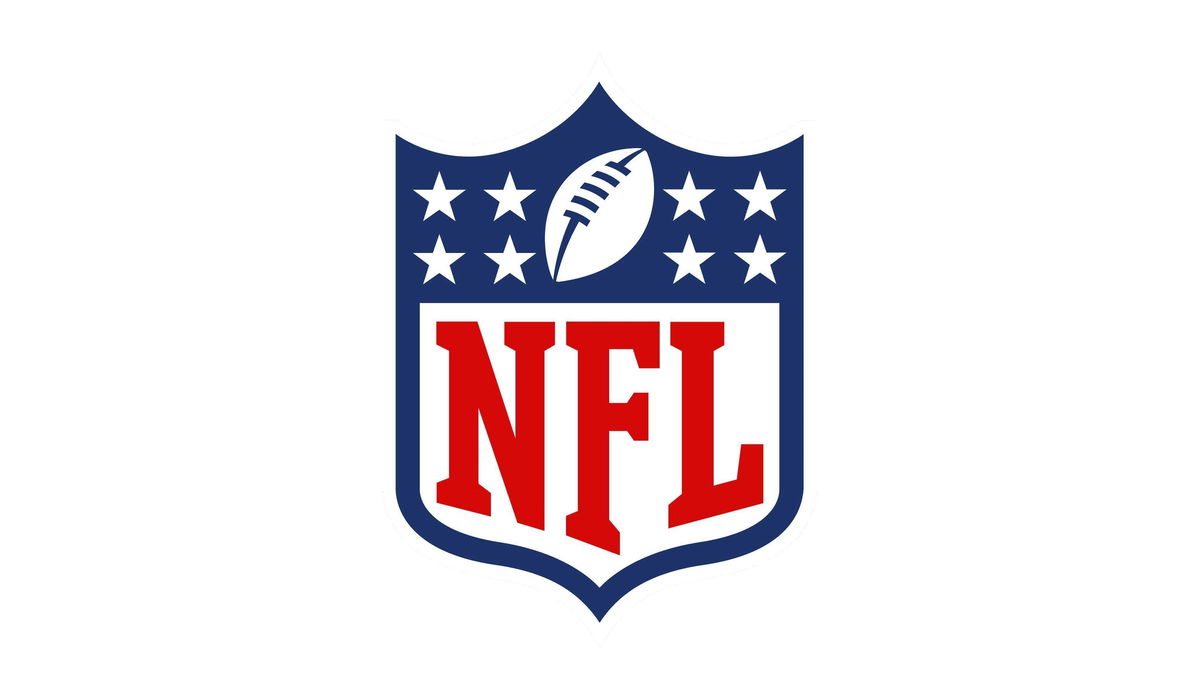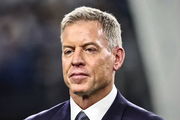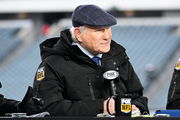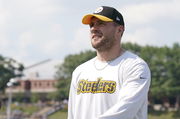
Imago
NFL, American Football Herren, USA Logo 1, Sportligen, Logo NFL Logo 1, Sports leagues, Logo Copyright: imageBROKER/LogoxFactory iblmwf12237447.jpg Bitte beachten Sie die gesetzlichen Bestimmungen des deutschen Urheberrechtes hinsichtlich der Namensnennung des Fotografen im direkten Umfeld der Veröffentlichung NFL Logo 1, Sportligen, Logo NFL Logo 1, Sports leagues, Logo Copyright: imageBROKER/LogoxFactory iblmwf12237447.jpg imago images 0801438148 Bitte beachten Sie die gesetzlichen Bestimmungen des deutschen Urheberrechtes hinsichtlich der Namensnennung des Fotografen im direkten Umfeld der Veröffentlichung

Imago
NFL, American Football Herren, USA Logo 1, Sportligen, Logo NFL Logo 1, Sports leagues, Logo Copyright: imageBROKER/LogoxFactory iblmwf12237447.jpg Bitte beachten Sie die gesetzlichen Bestimmungen des deutschen Urheberrechtes hinsichtlich der Namensnennung des Fotografen im direkten Umfeld der Veröffentlichung NFL Logo 1, Sportligen, Logo NFL Logo 1, Sports leagues, Logo Copyright: imageBROKER/LogoxFactory iblmwf12237447.jpg imago images 0801438148 Bitte beachten Sie die gesetzlichen Bestimmungen des deutschen Urheberrechtes hinsichtlich der Namensnennung des Fotografen im direkten Umfeld der Veröffentlichung
The Eagles’ season opener against the Cowboys got off to an unusual start. After Jalen Carter spat on Dak Prescott, he was ejected for unsportsmanlike conduct and later fined $57,222, along with a one-game suspension that is considered already served. Although there was concern about a potential suspension, NFL rules indicated such an instance was unlikely. Eagles were lucky, but the league is getting strict with its rules. If such conduct is repeated, it can lead to penalties and ejection.
Watch What’s Trending Now!
The NFL and NFLPA have established comprehensive rules governing player behavior, with unsportsmanlike conduct carrying potentially serious consequences. Understanding these guidelines is crucial as violations can significantly impact both individual players and their teams’ plans. The severity of penalties varies based on the nature and frequency of infractions, making it essential for players to grasp what constitutes unacceptable behavior under league standards.
ADVERTISEMENT
What is considered unsportsmanlike conduct? Fines, Ejections & More.
The NFL rulebook attempts to eliminate ambiguity by specifically listing prohibited behaviors as unsportsmanlike conduct, including throwing punches, using forearms or kicking, employing abusive or threatening language and gestures, baiting or taunting opponents, making violent gestures, having unnecessary physical contact with officials, engaging in excessive celebrations, using objects as props, removing helmets during play, and jumping or standing on teammates to block kicks. The rulebook also includes additional but less common examples of violations. Ultimately, determining whether an action constitutes unsportsmanlike conduct remains a judgment call by the game officials, leaving some interpretation in their hands despite the detailed guidelines.
And the penalty comes heavy with a 15-yard loss. If it occurs during a play, the ball is moved 15 yards from the play’s starting point. And if it happens after the play, the 15-yard penalty is enforced from the succeeding spot. When an unsportsmanlike conduct penalty is called against the defense, the offense automatically receives a first down regardless of yardage. This occurs even if the 15-yard penalty alone wouldn’t be sufficient to reach the first down marker.
Top Stories
Forced to Leave FOX, Cowboys Legend Troy Aikman Says ESPN Is Like ‘U.S. Government’ & Clearly Distinguishes the Two Networks

FOX Issues Strict Ban on Terry Bradshaw But NFL Legend Defies It to Join Popular Morning Show

What Happened to T.J. Watt? Why Is He Hospitalized? Steelers Announce Latest News on LB Before Dolphins Game

Cam Newton Reveals Exactly Why 32 NFL Teams Blacklisted Him as Panthers Legend Announces Retirement Status

Cowboys Call Out Brian Schottenheimer’s Decision After Lions Loss as Jerry Jones Shares Playoff Message

The players can also feel the pinch in their wallets. As per the NFL rules, a first offense can drain $14,491, while a second offense climbs to $20,288. Taunting comes with fines of $11,593 for the first time and $17,389 for the second. Even tossing the ball into the stands, something that may seem harmless, can get players fined $8,114 the first time and $13,911 the next.
ADVERTISEMENT
Now, there are subtle details in these rules that can be more complicated. Such as when it comes to how players treat game officials, the NFL doesn’t mess around.
ADVERTISEMENT
What is considered an offense against a game official? Fines, Ejections & More.
If a player makes unnecessary physical contact with an official, the fine is steep, with $40,686 for the first offense and a shocking $81,374 if it happens again. This is also considered unsportsmanlike behavior. But there are exceptions. During the Cowboys’ first preseason game in 2025, CeeDee Lamb, who was excited to watch the team deliver a brilliant performance, stood in an improper place in the official’s way. And unfortunately, an official ran into him. While both the player and the official were uninjured after the collision, what happened was wrong. As per the rules, he could have been fined. Fortunately, he wasn’t.
And even if it’s not physical, players might still have to face financial consequences. Verbal abuse or any other non-physical offense against an official costs $32,547 the first time and doubles to $65,100 if it happens again.
ADVERTISEMENT
What is considered a fighting penalty? Fines, Ejections & More.
Now, the rules are strict if there’s a fight. The fighting is termed in throwing a punch, or a forearm, or kicking at an opponent, even though no contact is made. The league can fine a player $40,686 for the first offense and a hefty $81,374 if they do it again. So, even if a player leaves the bench during a fight, there can be consequences. And that is a $12,172 fine the first time and $17,968 for the next. With an average of 1.31 unsportsmanlike conduct penalties per team league-wide, more strict rules were inevitable.
It was evident in the preseason. Not the fighting penalty, but Isaiah McGuire got flagged in the preseason after celebrating with the banned gesture of the “nose wipe” on the field.
ADVERTISEMENT
What is considered a flagrant personal foul? Fines, Ejections & More.
The NFL categorizes various dangerous plays as flagrant fouls with corresponding financial penalties. The fine structure shows escalating amounts for repeat offenses:
Moderate Violations ($11,593-$12,172 first offense): Face mask penalties, late hits, striking/kicking/tripping, and low blocks fall into this category, with repeat offenses jumping to $17,389-$17,968.
Serious Safety Violations ($17,389 first offense): Horse collar tackles, hip drop tackles, leg whips, hits on defenseless players, blindside blocks, and roughing the passer carry higher initial fines, escalating to $23,186 for repeat violations.
ADVERTISEMENT
Most Severe Violations ($23,186 first offense): Impermissible use of helmet/launching represents the most serious category, with repeat offenses reaching $46,371 – reflecting the NFL’s emphasis on protecting players from head and neck injuries.
What is considered a uniform penalty? Fines, Ejections & More.
While this isn’t unsportsmanlike behavior, there are strict rules regarding the players’ uniforms, which come with a penalty if violated. Once play begins, violations that involve competition or player safety, such as wearing an illegal kicking shoe, applying adhesive or slippery substances, or failing to wear mandatory equipment, can result in the player being removed until the issue is resolved. The player isn’t allowed to enter in case of other violations too. This includes wearing wristbands or mouthpieces that are not approved by the league, or using a towel with a personal message.
ADVERTISEMENT
If the violations are repeated, it may result in the player’s ejection from the game. Moreover, if a player gets suspended for using sticky or slippery substances, they have to sit out for at least one play. And the rule still applies in case of a timeout, the two-minute warning, or even the end of a quarter. Although it’s a little different for the kickers. If one gets suspended for using an illegal kicking shoe, they also have to miss at least one play. But in their case, they’re allowed to come back in right away if there’s a timeout, the two-minute warning, or the end of a period.
A player (or team) can be fined $5,797 if they are missing appropriate equipment, such as shoulder pads, thigh pads, or knee pads. If it happens again, the fine doubles to $11,593. Certain violations carry more severe penalties. For instance, displaying personal messages on uniforms can lead to an initial fine of $11,593, which increases to $17,389 for repeat offenses. Unauthorized logos or the use of intellectual property face even stricter penalties, such $11,593 and which can escalate to $23,186.
Even details like socks, jerseys, and undergarments aren’t overlooked. Uniform violations in these areas lead to a fine of $5,797 the first time, and a much steeper $17,389 if the mistake is repeated. So, it is to minimize such incidents that the league has stricter measures. And violations of these rules or repeated offenses can even lead to suspension.
ADVERTISEMENT
Ejection Standards
NFL officials have broad discretion to eject players for unsportsmanlike conduct when actions are deemed “flagrant,” relying on their judgment and rule knowledge to make these determinations. The league mandates automatic ejection for players receiving two unsportsmanlike conduct penalties involving: throwing punches, forearms, or kicks at opponents (regardless of contact), using abusive or threatening language toward anyone on the field, or engaging in baiting and taunting that could escalate tensions between teams.
However, officials retain the authority to eject a player after just one penalty if they determine the conduct warrants immediate removal. This flexibility allows referees to address severe violations without requiring a second infraction, emphasizing player safety and game control over rigid penalty accumulation. Jalen Carter’s ejection for spitting on Dak Prescott perfectly illustrates officials’ discretionary power. Despite being Carter’s first penalty of both the game and season, referees determined the act was flagrant enough to warrant immediate removal, demonstrating how certain behaviors cross the line regardless of prior infractions.
The NFL’s unsportsmanlike conduct rules represent a comprehensive effort to maintain competitive integrity and player safety while preserving the sport’s entertainment value. While officials retain discretionary judgment in interpreting violations, the detailed guidelines provide players and teams with clear boundaries for acceptable behavior. Ultimately, these rules serve not just as deterrents but as essential safeguards that protect both the physical well-being of players and the professional standards that define NFL competition. As the game continues to evolve, these conduct policies remain vital tools for ensuring football remains both fiercely competitive and responsibly played.
ADVERTISEMENT
ADVERTISEMENT
ADVERTISEMENT

